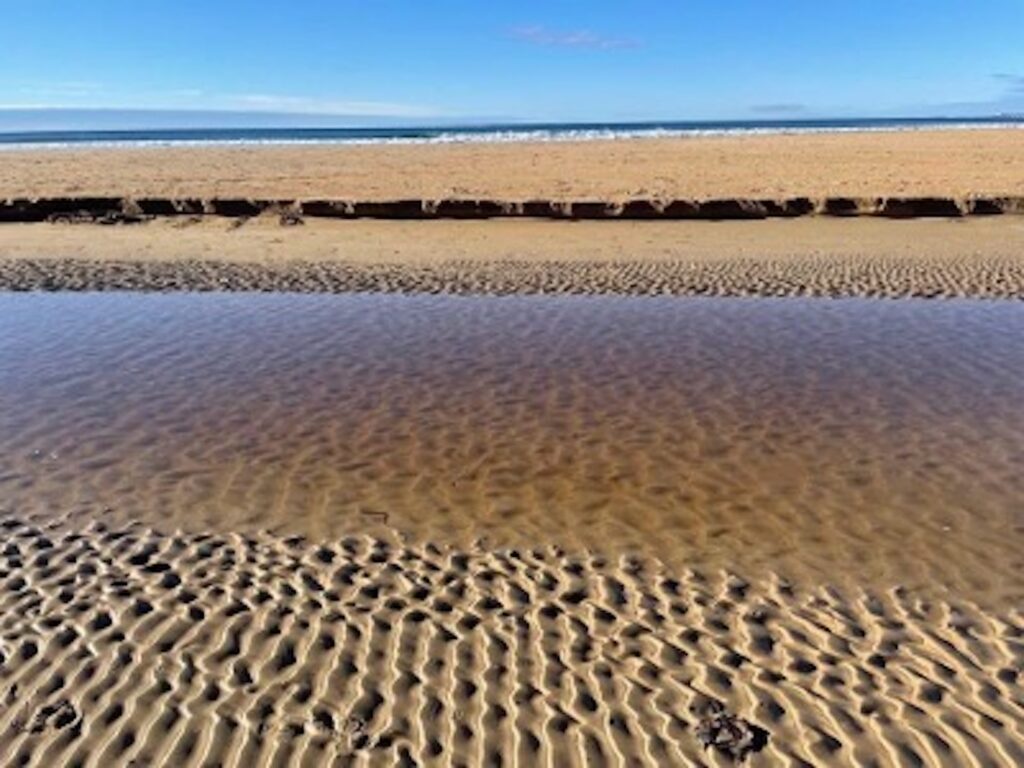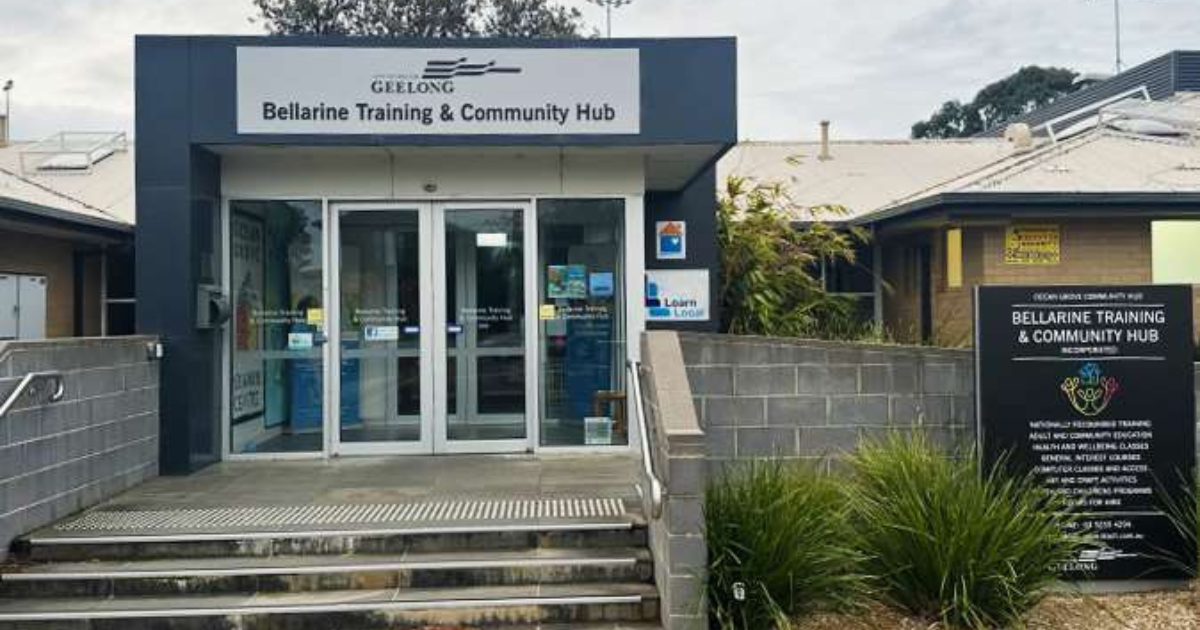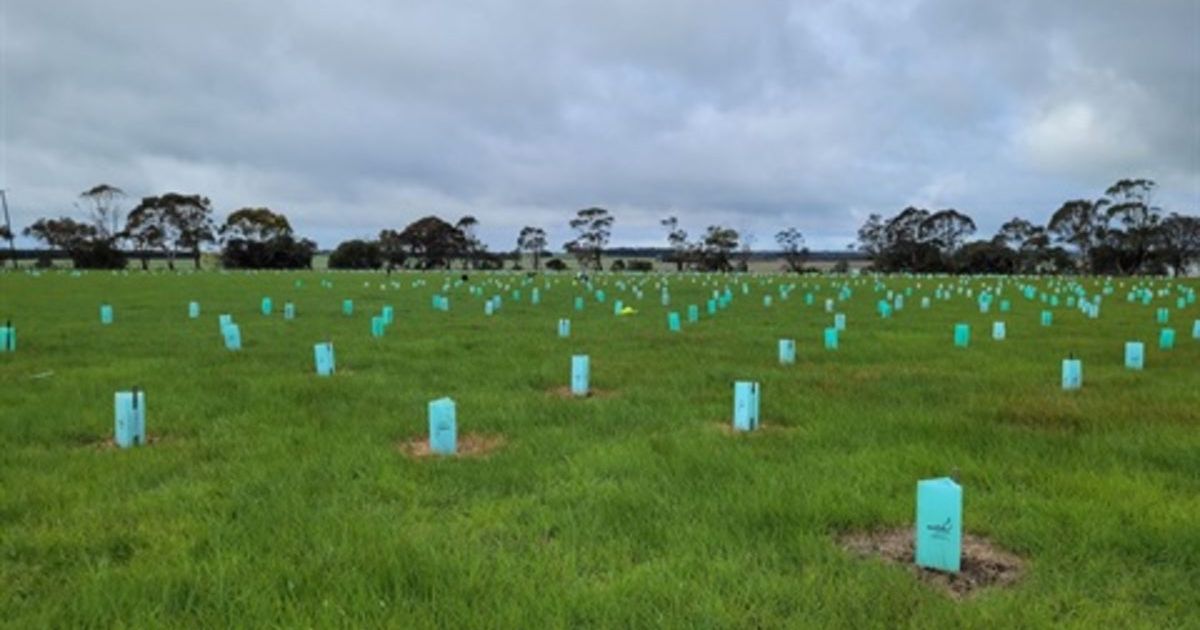Committee for Lorne: Sand ripples: How and why do they form?
Sand ripples: How and why do they form?
There are moments when, pottering about on the Internet and searching for simple answers to complex questions, a stunningly well-written explanation will confirm that the little green leprechaun you met in the fern gully last week was right … there is a pot of gold at the end of a rainbow.
This week, as I pondered an untracked sandbank at the George after the tide had receded while muttering my favourite Julius Sumner Miller line … ‘Why is it so?’… I found my pot of explanatory gold. In a 2020 blog post by Mirjam Sophia Glessmer, a postdoctoral researcher in physical oceanography at the Geophysical Institute, University of Bergen, Norway, she described the complex fluid mechanics of sand ripples in such a straightforward manner. I hope she will forgive me as I brazenly ‘nick’ her work [https://tinyurl.com/jruy9r3b] … with [abridged] quotations in italics.
At the outset, and for any of our local kids who chance to read this article … NB: I hope some will have heard of Julius Sumner Miller, but if not, have your science teacher look up some of his classics on YouTube for you … this article is all about curiosity. In a wonderland like Lorne, you are surrounded by wonders and mysteries just waiting to be unpacked, pondered, and explained—so be curious! Emulate Julius Sumner Miller and ask yourselves … ‘Why is it so?’
And so, to sand ripples, and why are they so? Why do they form in the way they do? When Mirjam asked herself this very same question while beach-wandering in Norway during the first months of Covid-19, she searched the Internet for the answers but was surprised to find that there wasn’t “a Wave Ripple 101 textbook out there”. She decided to create one, and it’s still the best I have seen. An edited version goes something like this …
“When water moves over a sandy bottom, there is a critical speed at which sand grains will start to move with the current. When the current exceeds that critical speed, it will begin to erode the sand and sweep some of the sand grains along with it. If the current slows, the sand grains will fall out of the current and settle back on the bottom.”
“If the bottom isn’t completely flat but has a tiny imperfection—a shell, a twig, or a slightly raised bump—this will influence the speed of the current relative to the bottom: a bump will narrow the space between the surface and the bottom and speed the current up while a dip in the bottom will widen the space for the water to flow and slow its speed. So, as a current flows over a bump, it will speed up.”
“Looking closely at the bump, it will have an asymmetric profile: a gradual incline on the upstream side and a steep drop on the downstream [or lee] side. Sand from the upstream side, where the current is strong, is being relocated and deposited on the lee side, where the current is weak. This slowly moves the bump forward, over time.”
Experiencing a crossing of Australia’s Simpson Desert is a pleasure second to none, where some 1,400 roughly parallel dunes march across the desert landscape like a magnified version of the George River sand bank. To successfully climb the last dune in the east—4WD devotees know it as ‘Big Red’—is regarded as a badge of honour in 4WD circles … but only if conquered from the east to the west, its downwind side.
As the prevailing winds of the Simpson sweep west to east, the gentle slope is always on the western side, while the steeper slope is inevitably on the east. The wind across the Simpson acts just as the water current does in the sandy bottom at the George. Sand ridges: above or below water.
Again, from Mirjam: “… in slower currents, sand grains slowly roll up the upstream slope of the sand ripple, are pushed over the top and tumble down the other side, but In faster currents, an eddy [a swirl of water] will form downstream of the bump, causing [1] the downstream side to erode to a steeper slope, while [2] some sand grains may even fly over this eddy and deposit on up-slope of the next ripple. Over time, this effect will slowly move the ripples downstream.”

Erskine mouth [with thanks to the photographer: Lorne FB page: 28/6/25
Mirjam then mulls over the factors that determine the wavelength and periodicity of a sand ripple—the distance between peaks and troughs—concluding that it is a mixture of grain size and current speed. “… the faster the current, the longer the wavelength [the distance peak to peak] of the ripple. In stronger currents, grains will be transported further from their ripple of origin before falling to form the next ripple. Stronger and faster currents will create a longer wavelength, as will shallower water. If sand grains are too small, they won’t form ripples or, at best, extremely flat ones. If the grains are too large [like stones], the current cannot move them but creates a turbulent flow around them instead.”
Many other factors play a role: grain shape will influence ‘cohesion’ between grains, bio-growth [like bacterial or algal mats] will make it harder for grains to move, and in tidal sand flats [like at the George], water depth and tidal wash will have a strong influence.
In essence, this article has been about curiosity — about encouraging our kids to think differently. We are so beset and consumed by polarising debate … the ‘he said, she said’ gutter reportage that now so consumes all forms of the media … that we forget to unpack, ponder, and explain the wonders around us—the ripples in our sand.
We have forgotten the joy of curiosity—to ask, as Julius Sumner Miller did: “… why is it so?”
Why do fungi grow where they do? … why do trees fall? … why do rips form where they do? … or does the Coriolis effect influence a soldier crab to spin clockwise [the Southern hemisphere] or anti-clockwise [the Northern hemisphere] when drilling into the sand? BTW: I have no answer to this question, but curiosity has prompted me to wonder.
Embracing curiosity will open new vistas, shed new light on old beliefs. Connecting with curiosity is as simple as pondering the sand ripples at the George.
John Agar
Feature Writer
A word from the chairman
Hello
What is life? Now there’s a question!
The word “life” is used in so many ways, but for me it is often best understood at its beginning and its end.
The miracle of birth is a time of great joy, the start of a new being and a new member of our family and our society. It is also the start of a long journey, which will bring with it moments of great happiness, challenge and loss. But that’s life, unpredictable and inexplicable.
The other time life comes into focus is on the death of someone. Like life, death comes in many ways and, depending on your beliefs, is a transition to an afterlife or the end of one’s being.
The celebration of someone’s life is almost invariably filled with a chronology and a reflection on the life of the departed. We recently attended the funerals of two people who died in very different circumstances. One was a dedicated teacher, who died after a long battle with cancer at the age of 56. In a final act of love, he married his long-time partner five days before he died, in the hospital where he spent his final months. The other funeral was of a young man aged 19 who took his own life. Barely out of school, just starting his life’s journey, he could not face the future. The celebration of his life presented to us a young, healthy, engaged, loving and loved son, brother and mate. Despite all the love around him, neither his family, his mates nor any of the hundreds of people who attended his funeral could save him from the hidden demons that afflicted him.
So, what is life? Life is love and hope.
*****
Three of our local lads, Matt Griffiths, Troy Fynmore and Ashley Macdonald are currently riding motorbikes off-road from the west coast of Australia, starting in Perth, heading north up the coast, then cutting inland through the heart of the red centre — travelling to the most easterly point of the Australian mainland, Byron Bay. It’s a 7,000km unsupported journey, across some of the roughest terrain in Australia, over 30 days.
They are doing it to raise awareness and funds for the Black Dog Institute, supporting its mission to tackle mental health challenges through research, education and early intervention.
The ride is about showing up for those who are struggling. It’s about supporting the people in our lives — and proving that real strength means asking for help, checking in, and being there for one another. Mental illness doesn’t discriminate – it affects 1 in 5 Australians every year with symptoms like depression and anxiety, including many in our community. The impact can be devastating, not only for those living with it, but for those around them. I urge you to support the cause. You can donate here: https://www.teamblackdog.org.au/fundraisers/mattgriffiths.
Cheers, and look out for those around you.
Lorne Ward Events Calendar
August
9 – Lorne Dolphins Football and Netball V Western Eagles, at Stribling Reserve, juniors match from 8:45am, seniors at 2pm
13 – Lorne P12 College – Instrumental Music night, @Stribling Reserve 69pm
16 – Surfcoast Wonderfalls Trail Run, Starting at Cumberland River/Lorne. Distances: 6km 13km 25km 42km 52km
23 – Lorne Dolphins Football and Netball V Simpson, at Stribling Reserve, juniors match from 8:45am, seniors at 2pm
25 – Cheese-Making Course, Learn to make ricotta, paneer & mozzarella at Deans Cottage. 6pm – 7pm $35 per person. Register: [email protected]
September
3 – Round One Lorne Bowls Club Community Cup
7 – LAAC Winter Comp No 4. lines down after 6am, weigh in at the Lorne Aquatic and Angling Club at 12.30pm. Free roast lunch for competitors, $10 non-fishing members.


















